Diving into the myths and legends behind sea monsters
Sampling of species from the “Sea Monsters” exhibition include a musky octopus, white shark jaw, and fangtooth fish.
Video and photos by Stephanie Mitchell/Harvard Staff Photographer
New exhibit lets visitors discover sea creatures often more astonishing than the fantastical beings we may have imagined
The idea of sea monsters has captivated us for centuries. Could there really be something scary lurking in the dark depths? Folklore and popular culture say yes, yet science urges us to dive a little deeper.
“Sea Monsters: Wonders of Nature and Imagination” is a new exhibition at the Harvard Museum of Natural History, one of the four Harvard Museums of Science & Culture, which investigates the mystery and lore behind some of the ocean’s most fascinating creatures. It was inspired by a popular course taught by Peter Girguis, guest curator and Harvard professor of organic and evolutionary biology.
“This course is really a survey of humankind’s relationship with the ocean, from ancient mariners to current political affairs,” he said. “What’s been most rewarding is seeing the students realize how important the ocean is to humanity and how we often apply monstrosity to things we simply don’t understand.”
Sea monsters are a universal phenomenon, appearing in the myths and legends of cultures around the world. However, many of these exciting stories come from real creatures hidden in the deep. In the exhibition, visitors will ask themselves: Do sea monsters exist? And if so, what do they tell us about ourselves and our connection with the ocean?
Ancient mythology depicts the sea as a realm of chaos, filled with fearsome creatures like the Greek Hydra. Hindu mythology conjured the Makara, a sea monster that symbolizes protection and good fortune. In African folklore, creatures like the Mngwa and the Inkanyamba are feared as evil water spirits. However, with modern science and technologies, we better understand the lives of the real creatures behind these legends. For instance, the New England-based Scituate Sea Monster was ultimately identified as a decaying basking shark; the Kraken in Jules Verne’s “Twenty Thousand Leagues Under the Sea” is likely the enigmatic deep-sea giant squid.

Harvard Professor of Organismic and Evolutionary Biology Peter Girguis visits the exhibit “Sea Monsters: Wonders of Nature and Imagination” at the Harvard Museum of Natural History.
Visitors will discover the existence of sea creatures whose real lives are often more astonishing than the fantastical beings we may have imagined. Visitors can see these creatures firsthand when peering into displays of specimens from the Museum of Comparative Zoology’s extensive collections, such as a viperfish, the tentacle and beak of a giant squid, and a Megalodon shark tooth.
The exhibition features historical illustrations of these fabled monsters and detailed ancient mariners’ maps. Ancient maps held important cultural knowledge, often revealed through depictions of mythological creatures that served as warnings of dangerous and uncharted waters. Also on display is a Peruvian ceramic pot made by the ancient Moche people, which shows a crab with human-like features losing a battle with a god. A two-foot Gregorian reflecting telescope made around 1750, decorated with two sea serpents, also appears in the gallery.
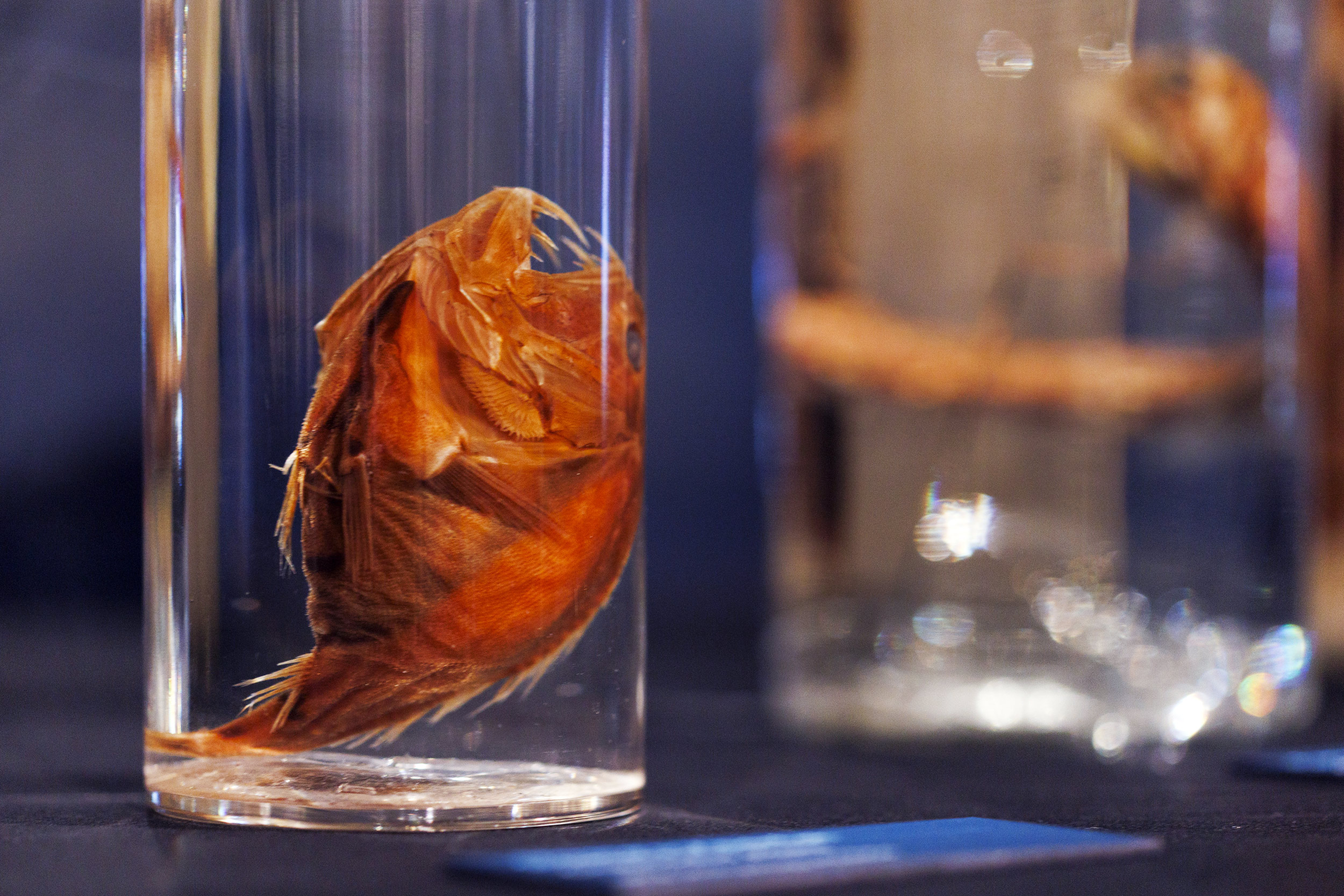
Sloane’s viperfish, courtesy of the Museum of Comparative Zoology, Harvard University.
Tentacles and teeth are frequently associated with monsters of the sea. In reality, tentacles are important and adaptable tools used to sense the environment, catch food, and for protection. Surprisingly, the viperfish’s needle-like fangs feel more like toothbrush bristles than daggers. And while the deep-sea anglerfish may look scary, most are just a few inches long and only eat small fish and shrimp. Many of these creatures are captured in eerie and stunning deep-sea photography by Solvin Zankl and others.
The exhibition explores how ocean ecosystems are threatened by creatures such as the crown-of-thorns starfish which feeds on coral polyps and Sargassum seaweed which is growing out of control in some places due to agricultural-nutrient runoff, creating dead zones in the ocean and overwhelming beaches. Even more monstrous than these invaders are the pressures we humans place on the ocean. Plastic pollution and human-influenced climate change are endangering marine life and ecosystems. These are the real sea monsters and the exhibition shows that we have the chance to work toward sustainable solutions that protect our oceans for future generations.
The exhibition is open to the public through June 26, 2026.

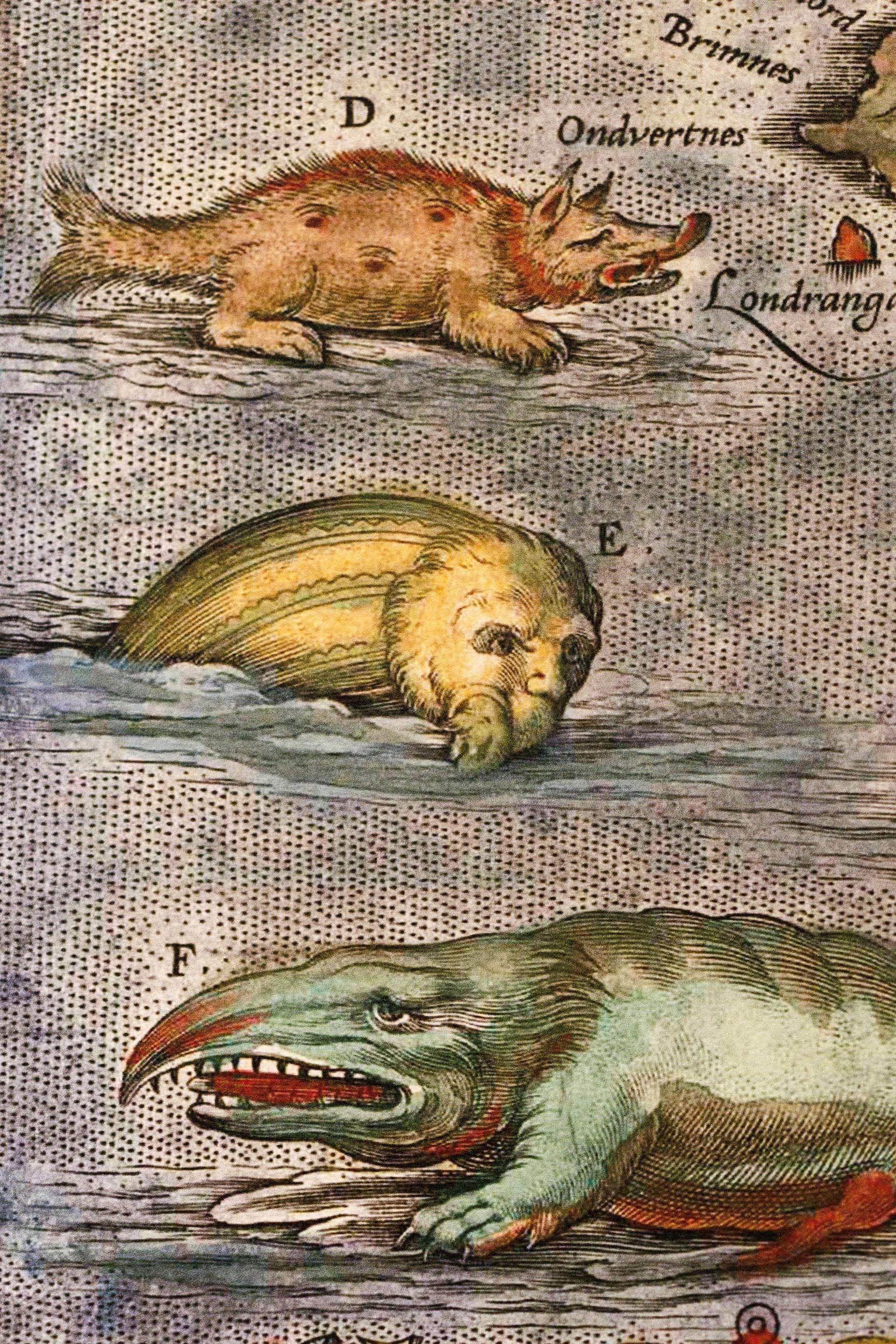
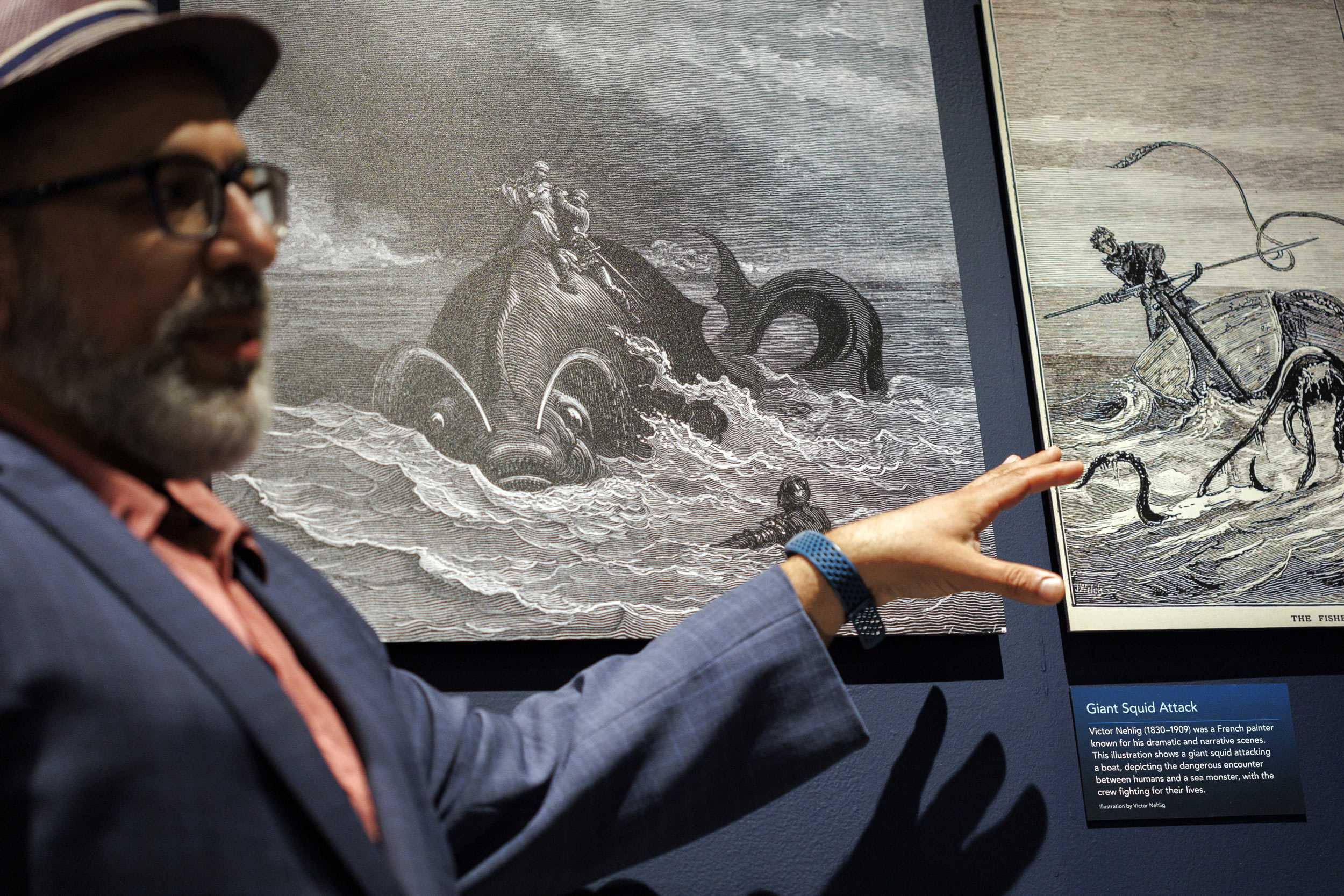
Girguis shares information on two illustrations with captions that read: “Gustave Dore’s illustration for Ludovico Ariosto’s epic poem ‘Orlando Furioso’ shows a knight fighting a monstrous sea creature” and “Victor Nehlig (1830-1909) was a French painter known for his dramatic and narrative scenes. This illustration shows a giant squid attacking a boat, depicting the dangerous encounter between humans and a sea monster, with the crew fighting for their lives.”

Young visitors from the community. Coral and Alexander Ain. watch a projection of the film “Jaws” within the exhibit.
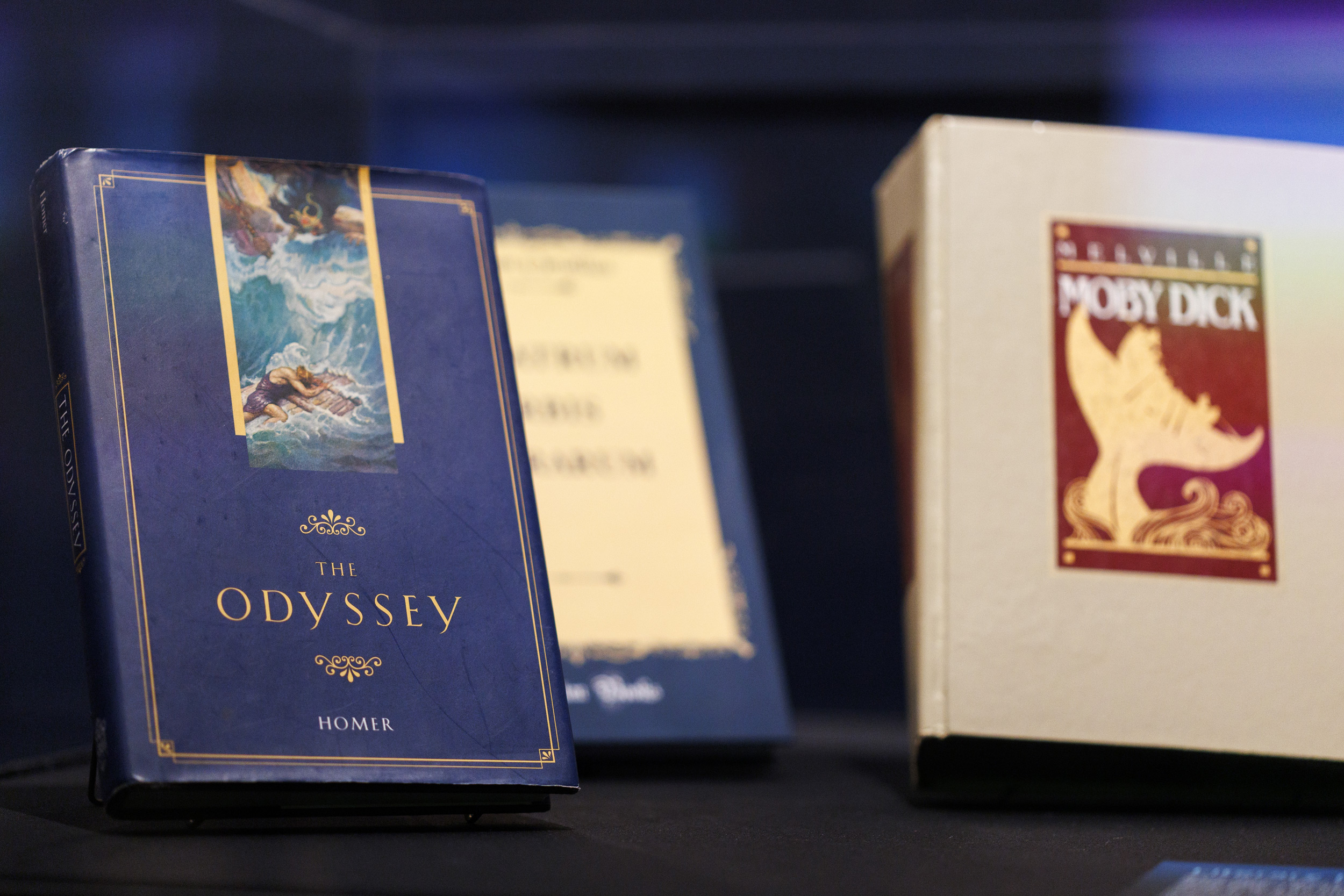
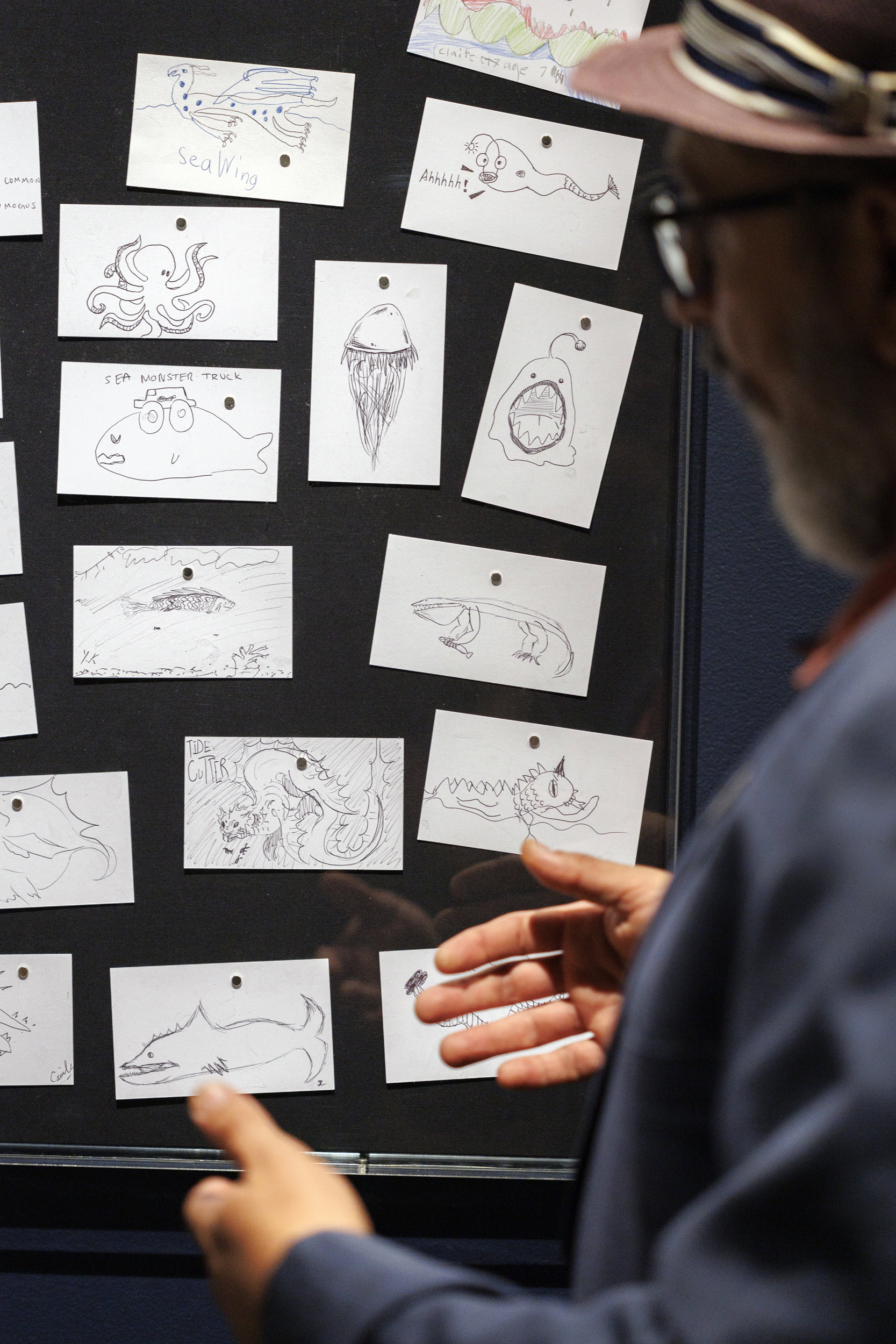
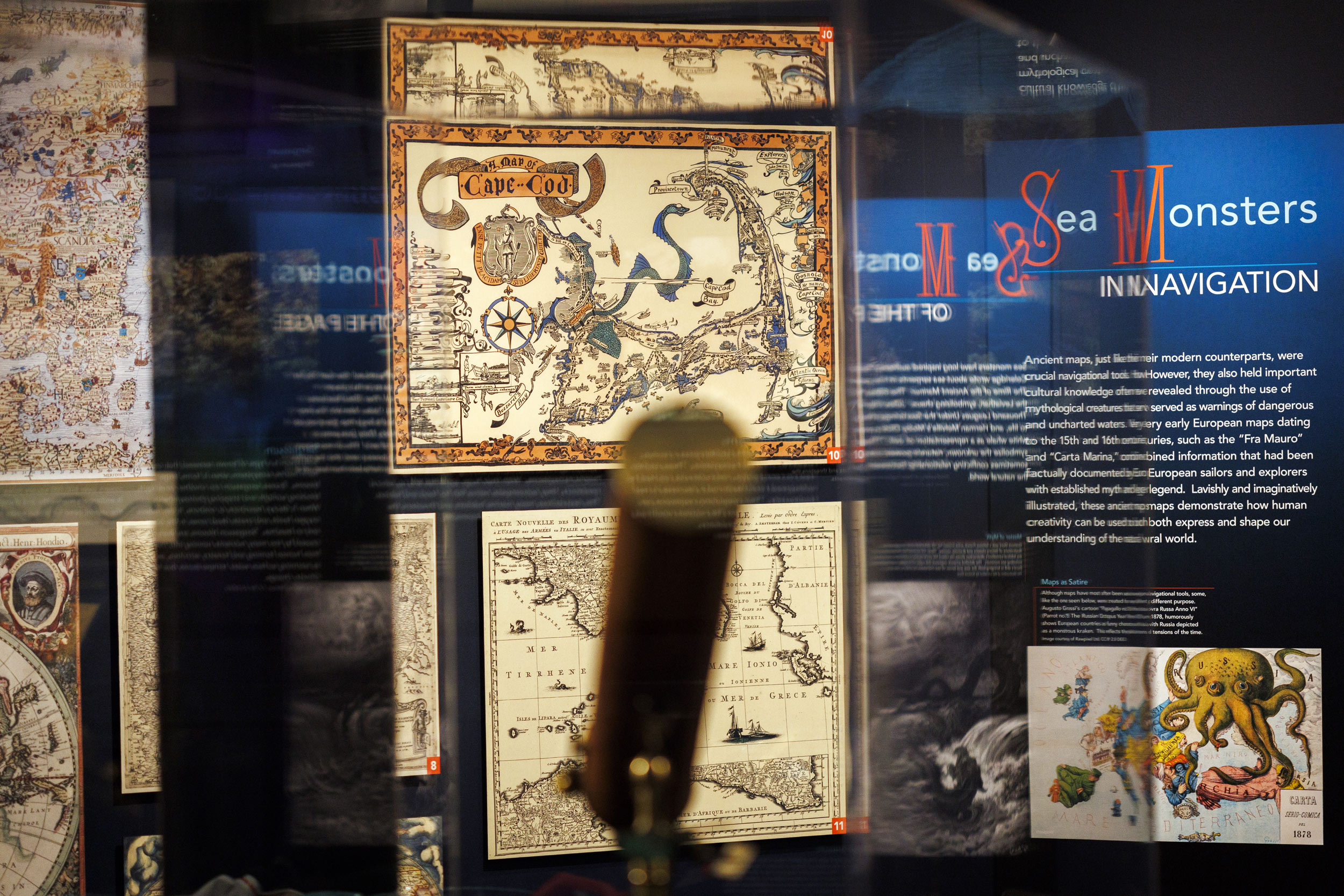
A collection of maps used for navigation, including a map of Cape Cod (1926) created by Mélanie Elizabeth Leonard of Massachusetts, are on display. Courtesy of the Harvard Map Collection, Harvard Library.




